基于磁流体的新型磁场传感方法和磁光调制特性的研究
VIP免费
摘 要
纳米磁流体是将包裹上表面活性剂的纳米级强磁性颗粒均匀分散在合适载液
中所形成的一种稳定胶体溶液,也就是说磁流体是一种具有强磁性的新型复合功
能材料。它不但具有固体磁性材料的磁性,还具备液体材料的流动性。由于磁流
体的微观结构在磁场作用下可形成规律性的有序分布,使得磁流体表现出许多独
特的光学性质。本论文主要研究基于磁流体的可调折射率特性实现的两种磁场传
感器,以及基于磁流体动态微观结构特性所研究的周期型磁场对磁流体透射特性
的影响。
磁流体的可调折射率特性作为磁流体众多磁光特性的一种典型性质,一直以
来都是人们研究的热点。我们利用此特性设计了两种磁场传感系统,一种称之为“V
形槽传感系统”。当激光束通过填充磁流体的 V形槽时,由于出射光的传播方向受
到V形槽填充磁流体折射率大小的影响,另磁流体折射率大小与磁场强度有关,
因此可通过测量出射光在探测平面上的位置间接得到磁场强度的大小。这种传感
系统避免了传统传感器的诸多缺陷以及基于法拉第效应磁场/电流传感中所存在的
本征双折射的影响,具有结构简单,且可工作于任意入射角下等特点。另一种称
之为“毛细管传感系统”,当激光束通过填充磁流体的毛细管时,由于毛细管所形成
的四透镜模型,使得出射光的焦线位置受到磁场强度大小的影响,因此可通过测
量出射光的焦线位置得到磁场强度的大小。这种传感系统除具有 V形槽传感系统
的优越性之外,还具有传感媒质用量少、设备微型化、易于操作等优点。理论分
析了这两种传感方法的测量原理、精确度和灵敏度,数学上表征了光通过这两种
系统的传播情况,并进行了实验验证。在我们的实验参数和条件下,对于 V形槽
传感系统,其磁场传感灵敏度最大可达 7.5 mm/T;对于毛细管磁场传感系统,
其磁场传感灵敏度最大可达 3.75 mm/T。
磁流体在外磁场作用下的磁光调制作为磁流体的另一典型特性,也一直受到
研究者的青睐。我们在传统的磁流体磁光调制研究基础上,通过周期性开关磁场
改变磁流体薄膜样品的透过率随时间的变化,研究了透射光的调制特性与磁场周
期之间的定量关系。实验发现在方波式调制与振荡式调制之间存在一个过渡调制
周期,且此过渡调制周期与磁场强度和磁流体浓度成反比。当磁场强度为 0.505 T
时,对于浓度为 5.62%的样品,其最小过渡调制周期为 40 s;当磁场强度为 0.134 T
时,对于浓度为 1.87%的样品,其最大过渡调制周期为 282 s。研究发现,这种磁
流体透射特性与磁场周期的关系对开发实际基于方波式调制的磁流体光子器件具
有很好的参考价值和指导意义。
关键词:磁流体 可调谐折射率 动态微观结构 过渡调制周期 光子器
件 磁场传感器
ABSTRACT
Magnetic fluid (MF) is a kind of homogeneous colloidal dispersion with
nanoparticles, surfactant and a suitable liquid carrier, that is to say, magnetic fluid is a
kind of composite functional material with ferromagnetism, which have both the
magnetism of the solid magnetic materials and the fluidity of liquid materials. And MF
has numerous unique optical properties owing to the dynamic microstructure under
magnetic field. This dissertation is mainly concerned with two magnetic field sensors
based on the tunable refractive index of MF and the influence of the cyclical magnetic
field to the transmission of MF based on the dynamic microstructure.
As a typical property of MF, the tunable refractive index of MF is always the
interesting point of many researchers. We design two kinds of magnetic field sensing
system utilized this typical property. One is V-shaped sensing system. The propagation
of the emergent light passing through the index-tunable MF will be influenced when the
externally applied magnetic field is changed. So, measuring the location of the emergent
light on the detecting plane can be used to meter the strength of the externally applied
magnetic field. This sensing system avoids many defects of the traditional sensors and
the inherent birefringence of magnetic field or current sensor based on Faraday Effect,
has relatively simple structure, and can operate at any incident angle. Another is
capillary sensing system. When the laser beam passes the capillary filled with magnetic
fluid, owing to the four lens model constituted by capillary, the position of the focal line
will shift with the changing magnetic field strength. So the magnetic field strength can
be measured through detecting the position of the focal line. The system not only has
the advantages of V-shaped sensing system, but also has advantages of miniaturization
of device, easy operation, and lower dosage of MFs. Detailed theoretical analysis of the
sensing principle, accuracy and sensitivity of these two systems are conducted and
verified by the experiments. In our experimental parameters and conditions, the
maximum sensitivities are 7.5 mm/T and 3.75 mm/T for the V-shaped sensing system
and capillary sensing system, respectively.
As another typical property of MF, the tunable magneto-modulation of MF is also
always the interesting point of many researchers. In this work, we study the quantitative
relation between the modulation characteristic and the period of magnetic field under
externally switchable magnetic field with various modulation periods. There is a
transitional modulation period between the square-like and oscillation-like modulation,
which is inversely proportional to the strength of magnetic field and the concentration
of MF. Furthermore, the smallest transitional modulation period of magnetic field of 40
s and the largest transitional modulation period of magnetic field of 282 s are obtained.
The relation between the modulation characteristic and the period of magnetic field has
reference value and guiding meaning for designing the pragmatic photonic devices
utilized the square-like modulation property of MF.
Key Word :Magnetic fluid, Tunable refractive index, Dynamic
microstructure, Transitional modulation period, photonic devices,
Magnetic field sensor
目 录
中文摘要
ABSTRACT
第一章 绪 论 ........................................................................................................... 1
1.1 引言 ................................................................................................................ 1
1.2 磁流体简介 .................................................................................................... 2
1.3 磁流体的基本物理性质 ................................................................................ 4
1.3.1 磁流体的稳定性 ..................................................................................... 5
1.3.2 磁流体的磁化特性 ................................................................................. 6
1.3.3 磁流体的粘度 ......................................................................................... 7
1.4 磁流体的磁光效应 ........................................................................................ 7
1.4.1 磁光效应简介 ......................................................................................... 7
1.4.2 主要磁光特性及应用 ............................................................................. 8
1.5 课题研究内容和意义 .................................................................................. 18
第二章 纳米磁流体的传感应用进展 ................................................................... 20
2.1 引言 .............................................................................................................. 20
2.2 基于磁流体流动特性的传感器 .................................................................. 20
2.2.1 体积传感器 ........................................................................................... 20
2.2.2 流速传感器 ........................................................................................... 21
2.2.3 角度传感器 ........................................................................................... 21
2.3 基于磁流体导电特性的生物传感器 .......................................................... 22
2.4 基于磁流体磁光特性的光学传感器 .......................................................... 22
2.4.1 基于可调透射特性的传感器 ............................................................... 23
2.4.2 基于热透镜效应的传感器 ................................................................... 24
2.4.3 基于可调折射率特性的传感器 ........................................................... 25
2.4 本章小结 ...................................................................................................... 26
第三章 V形槽磁场传感器 ................................................................................... 27
3.1 引言 .............................................................................................................. 27
3.2 V 形槽磁场传感机理 ................................................................................... 27
3.3 传感理论分析 .............................................................................................. 28
3.3.1 传感表达式 ........................................................................................... 28
3.3.2 仿真结果与讨论 ................................................................................... 29
3.4 实验验证 ...................................................................................................... 31
3.5 本章小结 ...................................................................................................... 34
第四章 毛细管磁场传感器 ................................................................................... 35
4.1 引言 .............................................................................................................. 35
4.2 毛细管磁场传感原理 .................................................................................. 35
4.3 传感理论分析 .............................................................................................. 36
4.4 实验验证 ...................................................................................................... 40
4.5 本章小结 ...................................................................................................... 45
第五章 开关型磁场下的磁流体磁光调制 ........................................................... 46
5.1 引言 .............................................................................................................. 46
5.2 磁光调制系统 .............................................................................................. 46
5.3 磁光调制结果与讨论 .................................................................................. 49
5.4 本章小结 ...................................................................................................... 54
第六章 总结与展望 ............................................................................................... 56
6.1 本论文的工作总结 ...................................................................................... 56
6.2 今后工作展望 .............................................................................................. 57
附 录 ....................................................................................................................... 58
附录 A ................................................................................................................. 58
附录 B ................................................................................................................. 59
附录 C ................................................................................................................. 61
附录 D ................................................................................................................. 62
附录 E .................................................................................................................. 63
参考文献 ................................................................................................................. 65
在读期间公开发表的论文和承担科研项目及取得成果 ..................................... 79
致 谢 ....................................................................................................................... 80
摘要:
展开>>
收起<<
摘要纳米磁流体是将包裹上表面活性剂的纳米级强磁性颗粒均匀分散在合适载液中所形成的一种稳定胶体溶液,也就是说磁流体是一种具有强磁性的新型复合功能材料。它不但具有固体磁性材料的磁性,还具备液体材料的流动性。由于磁流体的微观结构在磁场作用下可形成规律性的有序分布,使得磁流体表现出许多独特的光学性质。本论文主要研究基于磁流体的可调折射率特性实现的两种磁场传感器,以及基于磁流体动态微观结构特性所研究的周期型磁场对磁流体透射特性的影响。磁流体的可调折射率特性作为磁流体众多磁光特性的一种典型性质,一直以来都是人们研究的热点。我们利用此特性设计了两种磁场传感系统,一种称之为“V形槽传感系统”。当激光束通过填充...
相关推荐
-
建筑工程投标文件范本-(格式)VIP免费
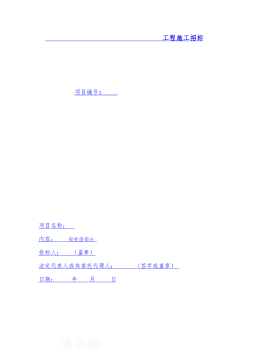
 2024-11-22 17
2024-11-22 17 -
幕墙工程施工组织设计方案VIP免费
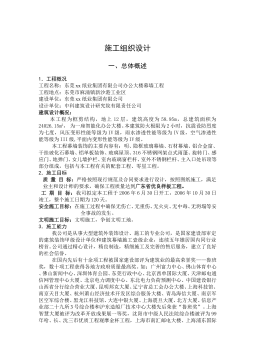
 2025-01-09 6
2025-01-09 6 -
建筑商品砼生产项目创业计划书VIP免费
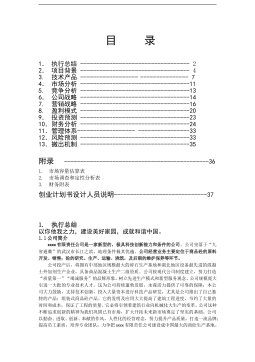
 2025-01-09 10
2025-01-09 10 -
建筑工程商业计划书模板VIP免费
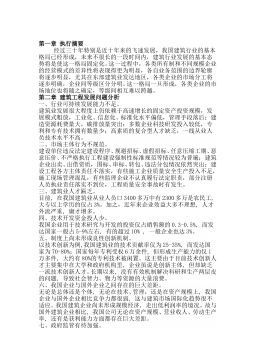
 2025-01-09 8
2025-01-09 8 -
工程项目施工计划书VIP免费
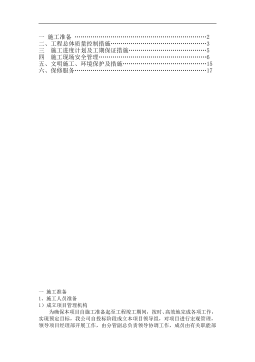
 2025-01-09 6
2025-01-09 6 -
《专业型文档》建筑企业计划书VIP免费
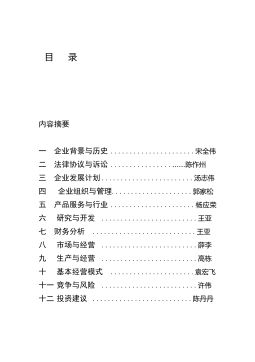
 2025-01-09 8
2025-01-09 8 -
xx水库灌区管道工程水工图纸C1VIP免费

 2025-01-09 13
2025-01-09 13 -
邮政区域仓储配送中心VIP免费
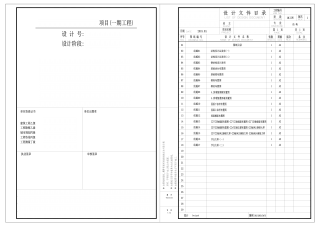
 2025-01-09 8
2025-01-09 8 -
疾病预防控制中心招标文件VIP免费
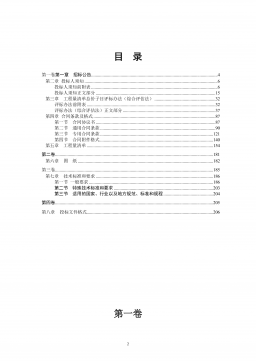
 2025-01-09 14
2025-01-09 14 -
体育健身中心施工招标文件VIP免费
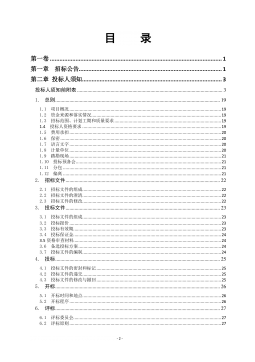
 2025-01-09 11
2025-01-09 11
作者:牛悦
分类:高等教育资料
价格:15积分
属性:84 页
大小:4.48MB
格式:PDF
时间:2024-11-11






